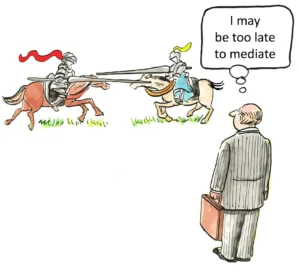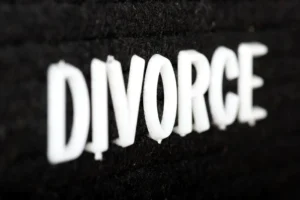How to Create Engaging Videos That Attract Legal Clients
In today’s digital landscape, attorneys who master the art of creating engaging videos gain a significant competitive advantage in client acquisition. The visual medium offers law firms an unparalleled opportunity to demonstrate expertise, build trust, and convert prospects into clients. This approach to legal marketing transcends traditional methods by allowing potential clients to see and hear from attorneys directly, creating a personal connection before the initial consultation.
The legal profession has historically relied on reputation and word-of-mouth referrals. However, the digital transformation of client acquisition demands that forward-thinking attorneys adapt their strategies. Video marketing for lawyers has emerged as one of the most effective tools for establishing credibility and differentiating a practice in a crowded marketplace. When executed properly, these visual presentations provide compelling social proof that text-based content simply cannot match.
The Strategic Importance of Video Content for Law Firms
The shift toward video content in legal marketing reflects broader changes in consumer behavior. Modern clients conduct extensive research before selecting legal representation, often forming impressions based on digital content long before making contact. Video content addresses this reality by providing a medium that is both informative and emotionally engaging.
For law firms seeking to expand their client base, video offers distinct advantages over traditional marketing methods. The medium allows attorneys to showcase their expertise, personality, and approach to legal matters in a format that resonates with potential clients. This visual demonstration of knowledge and professionalism builds trust more effectively than written content alone.
The statistics supporting video marketing’s effectiveness are compelling. Videos are 53 times more likely to appear on the first page of search results compared to text-based content. This enhanced visibility translates directly to increased client acquisition opportunities. Furthermore, videos significantly improve engagement metrics that search engines use to evaluate site quality, including time on page and reduced bounce rates.
Types of Legal Videos That Convert Prospects
Client Testimonial Videos
Client testimonial videos represent one of the most powerful tools in a law firm’s marketing arsenal. These authentic endorsements provide social proof that builds trust with potential clients by showcasing real people who have achieved favorable outcomes through your representation.
The effectiveness of testimonial videos stems from fundamental aspects of human psychology. People naturally seek validation from others when making important decisions, particularly when selecting legal representation for significant personal or financial matters. Seeing and hearing from satisfied clients creates an emotional connection that written reviews cannot replicate.
When creating testimonial videos, focus on authentic storytelling rather than scripted performances. The most compelling testimonials capture genuine emotion and real experiences. Clients should speak candidly about their challenges, their experience working with your firm, and the positive impact your legal services had on their lives. This authenticity resonates with viewers and builds the credibility necessary to convert prospects into clients.
Educational Legal Content
Educational videos that address common legal questions position your firm as a knowledgeable resource while building trust with potential clients. These videos demonstrate expertise without explicitly selling services, creating value that attracts prospects at the research stage of their decision-making process.
The most effective educational videos address specific legal concerns that align with your practice areas. For instance, a personal injury attorney might create videos explaining what to do immediately after an accident, while an estate planning lawyer could address common misconceptions about wills and trusts. This targeted approach attracts qualified leads who are actively seeking information related to your services.
When creating educational content, strike a balance between demonstrating expertise and maintaining accessibility. Avoid excessive legal jargon that might alienate viewers, instead focusing on clear explanations that demonstrate your ability to make complex legal concepts understandable. This approach showcases both your knowledge and your communication skills—a combination that potential clients find particularly valuable.
Attorney Profile Videos
Attorney profile videos humanize your practice by introducing the professionals behind the firm. These personal introductions help potential clients connect with attorneys on a human level, addressing the common concern about working with impersonal legal entities.
Effective profile videos go beyond professional credentials to reveal the attorney‘s personality, values, and approach to client service. While qualifications matter, clients often make decisions based on whether they feel comfortable with and trust their legal representative. Profile videos that showcase both expertise and personal qualities help potential clients envision a productive working relationship.
When creating attorney profiles, include elements that differentiate your practice from competitors. This might involve discussing your unique approach to client service, sharing your philosophy on legal representation, or explaining why you chose to practice in your specific field. These distinguishing factors help potential clients understand what makes your firm the right choice for their needs.
Practice Area Explainer Videos
Practice area videos help potential clients understand specific legal services and what to expect when working with your firm. These explanatory videos clarify complex legal processes, demystifying areas of law that often intimidate prospective clients.
The most effective practice area videos address common questions and concerns related to specific legal matters. For example, a divorce attorney might create a video explaining the different approaches to divorce proceedings, while a criminal defense lawyer could outline what happens during various stages of a case. This information helps potential clients understand both the legal process and how your firm navigates it.
When creating practice area videos, focus on the client’s perspective rather than legal technicalities. Explain how your services address specific problems and lead to positive outcomes. This client-centered approach demonstrates both expertise and empathy—a combination that resonates strongly with individuals facing legal challenges.
Production Best Practices for Legal Videos
Planning and Preparation
Effective legal video marketing begins with thorough planning. Before recording, clearly define your objectives, target audience, and key messages. This preparation ensures that your videos align with your broader marketing strategy and address the specific needs of potential clients.
Develop a content calendar that coordinates video production with other marketing efforts. This strategic approach allows you to create complementary content across platforms, reinforcing key messages and maximizing the impact of your marketing investment. Consider seasonal factors, practice area priorities, and current events when scheduling video production.
When planning individual videos, create a detailed outline or script that structures your content without sounding rehearsed. The best legal videos balance professionalism with authenticity, conveying expertise while maintaining a conversational tone. Prepare questions or talking points that guide the discussion while allowing for natural delivery.
Technical Considerations
While professional equipment enhances video quality, many law firms successfully create effective videos using high-quality smartphones and basic accessories. The focus should always be on capturing authentic content rather than achieving perfect production values.
Regardless of your equipment, certain technical elements significantly impact video quality. Proper lighting eliminates shadows and creates a professional appearance, while good audio quality ensures that your message is clearly understood. Consider investing in a simple lighting kit and external microphone to improve these critical aspects of video production.
Location selection also influences video effectiveness. Choose quiet, well-lit spaces with professional backgrounds that reflect your firm’s image. Remove distractions from the frame and ensure that the setting complements rather than competes with your message. For testimonials, consider filming in your office to reinforce the connection to your practice.
Presentation and Delivery
Attorney presence on camera significantly impacts viewer engagement. Speak clearly and confidently, maintaining eye contact with the camera to create a connection with viewers. Avoid reading directly from scripts, instead using talking points to guide a more natural conversation.
Dress professionally in a manner that aligns with your firm’s image and the expectations of your target clients. While formal attire may be appropriate for some practice areas, business casual might better suit others. The key is consistency with your overall brand and the impression you want to create with potential clients.
Body language communicates as powerfully as words. Maintain good posture, use natural hand gestures, and avoid nervous movements that might distract from your message. Practice on camera before filming important videos to identify and address any distracting mannerisms or delivery issues.
Strategic Implementation of Legal Videos
Website Integration
Your law firm’s website serves as the primary platform for showcasing video content for legal clients. Strategic placement throughout your site can significantly enhance user engagement and conversion rates.
The homepage represents an ideal location for featuring video highlights, as it’s often the first point of contact for potential clients. These brief clips can create an immediate emotional connection and encourage further exploration of your services. Consider featuring a compelling firm overview or client testimonial that quickly communicates your value proposition.
Practice area pages benefit from videos specific to each legal specialty. When potential clients research particular services, seeing relevant video content provides social proof at a critical decision-making point. This targeted approach addresses specific concerns and questions that prospects may have about particular practice areas.
Social Media Strategy
Social media platforms provide powerful channels for extending the reach of your legal videos beyond your website. Each platform requires a tailored approach to maximize engagement and effectiveness.
LinkedIn serves as an excellent platform for sharing professional content, particularly for B2B legal services or corporate practice areas. The platform’s professional audience responds well to substantive educational videos that demonstrate expertise and thought leadership. Share practice area explainers, legal updates, and professional insights that showcase your knowledge.
Facebook and Instagram offer opportunities to showcase the more personal aspects of your practice. These platforms favor authentic, relatable content that tells compelling stories. Client testimonials, behind-the-scenes glimpses of your firm, and attorney profiles often perform well on these channels, helping humanize your practice.
Email Marketing Integration
Incorporating video content into your email marketing campaigns can significantly increase engagement and conversion rates. Including video thumbnails in emails has been shown to increase click-through rates by up to 300%, making this an essential strategy for law firm marketing.
Welcome sequences for new subscribers should include videos that establish credibility early in the relationship. These introductory videos help new contacts understand the value you provide to clients and begin building trust before direct interaction with your firm. Consider including a brief firm overview or attorney introduction that sets the tone for the relationship.
Practice area-specific email campaigns benefit from relevant videos that address the particular legal challenges faced by the target audience. For instance, emails focused on estate planning services might include videos explaining common misconceptions about wills and trusts. This targeted approach demonstrates your specific expertise in addressing the recipient’s potential legal needs.
Legal and Ethical Considerations
Bar Association Compliance
When creating legal video content, attorneys must navigate various professional rules to ensure compliance with ethical standards. Bar association regulations regarding attorney advertising vary by state and often include specific guidelines for video testimonials and claims about expertise or results.
Most jurisdictions prohibit false or misleading statements in attorney advertising, including video content. This restriction extends to implied claims and visual elements that might create unrealistic expectations about outcomes. Review all video content carefully to ensure that it presents your services accurately and avoids prohibited claims.
Many states require specific disclaimers for attorney advertising, particularly when discussing past results or client testimonials. These disclaimers typically state that past results do not guarantee future outcomes and that testimonials represent individual experiences rather than typical results. Ensure that these disclaimers are clearly visible and meet any specific requirements regarding size, duration, or placement.
Client Confidentiality
Client confidentiality represents a critical consideration when creating video content, particularly testimonials. Attorneys must obtain proper informed consent before featuring clients in videos, and this consent should be documented in writing with clear parameters about how the content will be used.
Even with consent, attorneys should be careful not to disclose confidential information about client matters. This caution applies not only to explicit statements but also to background elements, documents, or context that might inadvertently reveal protected information. Review all client-related video content with confidentiality as a primary concern.
For practice areas involving particularly sensitive matters, consider alternative approaches to testimonials. These might include actors recreating scenarios with fictional details, former clients discussing their experience in general terms without specific case information, or focusing on the client-attorney relationship rather than case specifics.
Authenticity Requirements
The Federal Trade Commission (FTC) has established guidelines regarding endorsements and testimonials in advertising, requiring that they reflect honest opinions and actual experiences. These regulations apply to all forms of advertising, including legal video content.
To comply with FTC guidelines, ensure that testimonials accurately represent the client’s experience without exaggeration or selective editing that might create misleading impressions. Avoid scripting client responses or suggesting specific language that does not reflect their genuine experience with your firm.
If your firm provides any compensation or incentives for testimonials, this relationship must be disclosed in the video or accompanying materials. This transparency requirement applies even to nominal compensation or non-monetary benefits. The key principle is that viewers should understand any factors that might influence the testimonial’s content.
Measuring Success and Optimization
Key Performance Indicators
Implementing effective tracking mechanisms allows law firms to measure the impact of their video content and calculate return on investment. Key performance indicators for legal videos include view counts, engagement metrics (such as watch time, likes, shares, and comments), and conversion actions (like contact form submissions or consultation requests).
Track these metrics consistently over time to identify trends and patterns that inform your video strategy. Pay particular attention to differences in performance between video types, topics, and distribution channels. These insights help allocate resources to the most effective content and platforms.
Beyond basic metrics, implement attribution tracking to connect video views to actual client acquisitions. By using proper tracking codes and conversion paths, you can identify which videos most effectively convert viewers into clients. This data enables you to refine your approach based on what resonates most strongly with your target audience.
Content Refinement
Use performance data to continuously improve your video content strategy. Analyze which videos generate the most engagement and conversions, then create more content that follows similar patterns. This data-driven approach maximizes the return on your video marketing investment.
A/B testing provides valuable insights into specific elements that impact video performance. Test different approaches to titles, thumbnails, calls to action, and content structure to identify what works best for your audience. Even small improvements in click-through or conversion rates can significantly impact client acquisition over time.
Viewer feedback offers another valuable source of information for content refinement. Monitor comments and direct responses to identify common questions, concerns, or positive reactions. This feedback helps you address information gaps and emphasize aspects of your practice that resonate most strongly with potential clients.
Adaptation to Platform Changes
Digital platforms constantly evolve, with changes to algorithms, features, and user preferences affecting video performance. Stay informed about these changes and adapt your strategy accordingly to maintain effectiveness.
Monitor platform-specific best practices and adjust your approach to align with current recommendations. For instance, optimal video length varies by platform, with shorter content typically performing better on social media while longer, more detailed videos may be appropriate for your website or YouTube channel.
Emerging platforms and features present new opportunities for legal video marketing. Evaluate these opportunities based on their alignment with your target audience and marketing objectives. Early adoption of effective new formats can provide a competitive advantage, but focus your efforts on platforms that reach your specific client demographic.
Overcoming Common Challenges
Finding Willing Clients
One of the primary challenges in creating client testimonial videos involves finding clients willing to appear on camera. Many clients value their privacy or have concerns about publicly discussing their legal matters.
Establish a systematic approach to identifying potential testimonial candidates throughout the client relationship. Train your team to recognize opportunities when clients express gratitude or satisfaction with your services. These moments provide natural openings to discuss the possibility of a testimonial.
Offer incentives that provide value to clients without violating ethical guidelines. These might include professional photography sessions they can use for their own purposes, feature stories in your firm’s newsletter, or charitable donations in their name. Always ensure that any incentives comply with bar association rules regarding client testimonials.
Maintaining Authenticity
Balancing professional production quality with authentic expression represents another significant challenge. Overly polished testimonials may appear scripted or inauthentic, undermining their credibility.
Prepare clients without scripting them by discussing the general topics you’d like to cover while emphasizing that you want their genuine thoughts and experiences. Provide guidance on key points without dictating specific language. This approach helps clients organize their thoughts while preserving the authenticity of their expression.
Create a relaxed filming environment that helps clients feel at ease. Choose comfortable settings, limit the number of people present during filming, and allow sufficient time to avoid rushing. An experienced interviewer who can establish rapport and ask questions conversationally often elicits more natural responses than formal questioning.
Resource Constraints
Many law firms face resource constraints that limit their video production capabilities. These constraints may include budget limitations, time pressures, or lack of technical expertise.
Start with simple, high-impact videos that require minimal production resources. Client testimonials, brief educational content, and attorney introductions can be created with basic equipment while still delivering significant marketing value. As you demonstrate results, you can justify increased investment in more complex productions.
Consider outsourcing specific aspects of video production while maintaining control of content and strategy. Many freelance videographers, editors, and marketing specialists offer services at various price points. This approach allows you to access professional expertise without the expense of full-time staff or agency relationships.
Future Trends in Legal Video Marketing
AI and Personalization
Artificial intelligence is transforming how law firms create and distribute video content. AI-powered analytics can identify which video elements resonate most strongly with specific audience segments, enabling more targeted and effective distribution.
Personalized video experiences represent an emerging trend with significant potential for legal marketing. Advanced systems can dynamically assemble content based on viewer characteristics or behavior, creating more relevant viewing experiences. For instance, a potential client researching divorce services might automatically see testimonials from similar demographic groups.
AI-enhanced production tools are streamlining the creation process for legal videos. Automated editing systems can identify the most compelling segments from longer interviews, suggest optimal cuts, and even generate initial edits based on emotional analysis and engagement patterns. These tools reduce production time and costs while potentially improving effectiveness.
Interactive Video Experiences
Interactive technologies are creating new possibilities for engaging potential clients through video content. These advanced formats allow viewers to choose their own path through content, selecting the aspects most relevant to their specific situation.
Interactive elements such as clickable hotspots, embedded forms, and decision trees transform passive viewing into active engagement. For example, a video explaining different practice areas might allow viewers to select specific services for more detailed information, creating a personalized experience that addresses their particular legal concerns.
Virtual consultations represent another emerging application of interactive video technology. These real-time video interactions allow potential clients to discuss their legal matters directly with attorneys, combining the convenience of digital communication with the personal connection of face-to-face meetings. This hybrid approach addresses both accessibility and relationship-building needs.
Short-Form Video Adaptation
The rising popularity of short-form video platforms like TikTok, Instagram Reels, and YouTube Shorts presents both challenges and opportunities for law firms. These platforms favor brief, attention-grabbing content—typically under 60 seconds—requiring adaptation of traditional legal video formats.
Creating effective short-form legal content requires focusing on a single powerful message or emotional moment rather than attempting to compress a complete narrative. These micro-videos might highlight a specific legal tip, an emotional client statement, or a concise explanation of a legal concept. When strategically designed, these brief clips can capture attention and drive viewers to longer-form content.
The informal, authentic aesthetic favored by short-form platforms often aligns well with testimonial content. These platforms reward genuine emotion and relatability over polished production, potentially making it easier for law firms to create effective content without extensive production resources. This trend may democratize video marketing, allowing smaller firms to compete more effectively with larger competitors.
Conclusion
Creating engaging videos that attract legal clients has evolved from a marketing luxury to a strategic necessity for law firms seeking to thrive in an increasingly digital marketplace. The power of video stems from fundamental aspects of human psychology—our inherent trust in visual information and our ability to connect emotionally with authentic stories. As video continues to dominate online content consumption, law firms that master this medium gain a significant competitive advantage.
The multifaceted benefits of legal video content extend beyond immediate marketing impact. Videos improve search engine visibility, enhance website engagement metrics, provide versatile content for multiple platforms, and deliver measurable returns on investment. When properly executed with attention to legal and ethical considerations, video content creates a virtuous cycle of trust-building that supports sustainable practice growth.
As we look toward the future of legal marketing, the evolution of video content will likely accelerate through technological innovation and changing consumer preferences. Firms that embrace these changes—adapting to new formats, leveraging emerging technologies, and maintaining an unwavering commitment to authentic communication—will continue to realize the full potential of this powerful marketing tool. In an industry built on trust and reputation, there are few more effective ways to demonstrate your firm’s value than through compelling visual storytelling.
Citations:
- A 5-Step Law Firm Video Marketing Guide
- 10 Amazing Video Marketing Tips For Lawyers
- How to Leverage Video Content to Engage Legal Clients
- 4 Ways Law Firms Can Use Video Content to Stand Out
- How To Create A Video Content Strategy For Your Law Firm
- Video Marketing for Law Firms: 10 Tips for More Views
- Video Marketing Strategies for Lawyers and Law Firms
- Five Ways to Attract New Clients With Video Content
- Effective Video Marketing Strategies for Lawyers and Law Firms


















